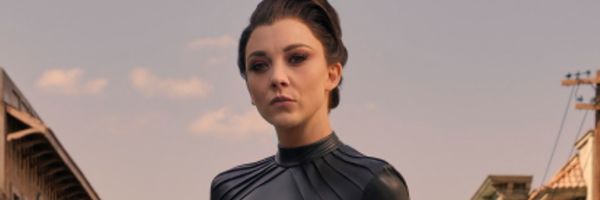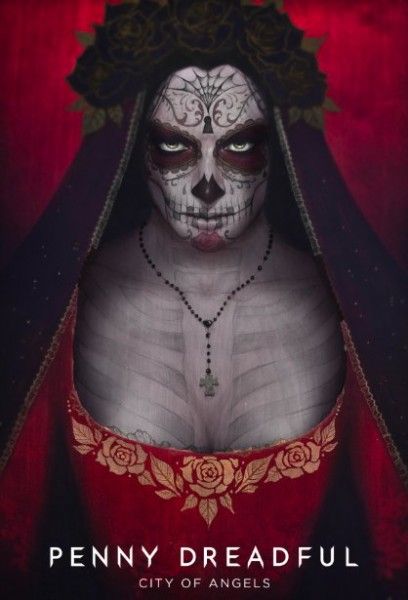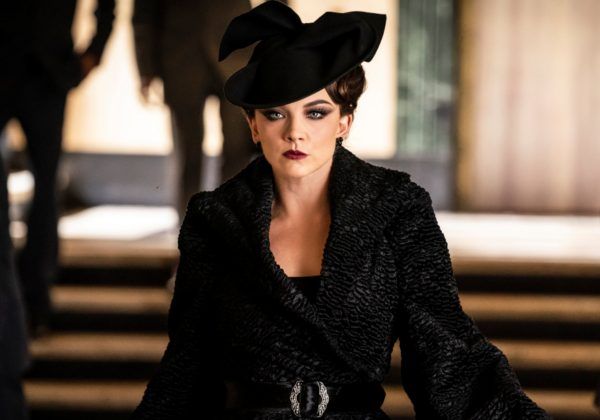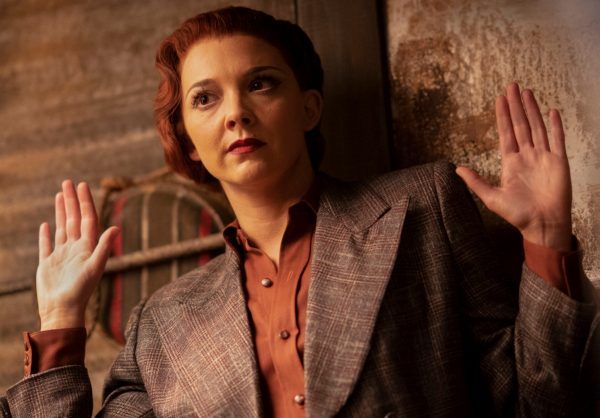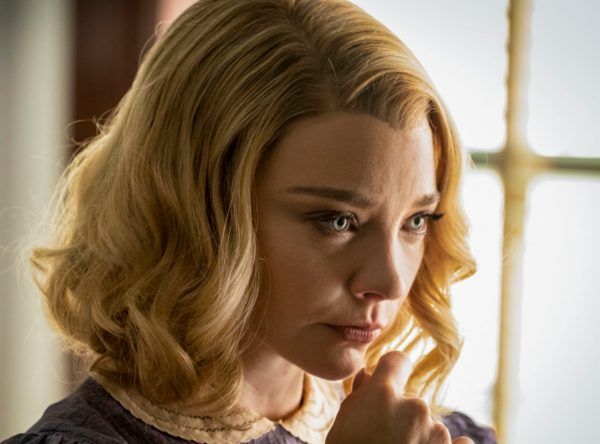From creator/writer/executive producer John Logan, the Showtime series Penny Dreadful: City of Angels tells the story of 1938 Los Angeles, a location with a rich history and a time that was rife with social and political tension. When a shockingly grisly murder is discovered, it sets Detective Tiago Vega (Daniel Zovatto) and his partner Lewis Michener (Nathan Lane) on a dangerous path with powerful forces that threaten to tear everything they know apart.
During this 1-on-1 interview with Collider, actress Natalie Dormer talked about playing the dark goddess Magda and the various guises she manifests in throughout the story, the sophisticated storytelling in John Logan’s work, being someone who loves exploring history, workshopping each of the different characters, the counterbalance between Magda and Santa Muerte (Lorena Izzo), the challenges of finding a character when you don’t necessarily know where they’ll end up, and how she’s looking to develop more projects through her company, Dog Rose Productions.
Collider: Coming off of the previous iteration of this series, with Eva Green and her performance as Vanessa Ives, does that make it scarier, or does that make it more exciting, knowing what the possibilities could be?
NATALIE DORMER: For me, it spoke of the fact that you know, with John Logan, that you’re gonna get a certain level of complexity in interwoven stories and characterizations, and that he’s gonna bring a certain amount of ambition, in being sophisticated in his storytelling. That was really what it was, for me. The man was a playwright, before he was anything else, and you see that in the DNA of the scripts.
Did they tell you, early on, about the incredible costumes and wardrobe?
DORMER: They said 1930s, which is just such a gorgeous era to look at. It’s not just the clothes, but the buildings and the cars, and everything. It’s a really gorgeous era to see on screen. It’s like the secret history of L.A. You could legitimately say that Penny Dreadful: City of Angels is John Logan’s like love letter to Los Angeles. He’s an Angeleno, and he loves L.A. All of those details of the freeway building, and where the different communities were living, and therefore the ghetto-ization. It’s basically socially engineering the politics of what was happening, at the time, and the city council. We were given a research document, when we started the job. We’re used to seeing L.A. like Hollywood and the studio system, at that time. We’ve seen that. Whether it’s the Coen brothers or Feud, we’ve seen that portrayed. But to see the L.A. that is the non-Hollywood L.A., for me, as someone who loves history, it was addictive. It was fascinating.
If you tell people that you’ve made a show about the building of the freeway, it sounds so dull, but it’s so much more than that.
DORMER: It’s actually really frickin’ exciting. It’s very conspiracy theory-esque. When you read what the Nazi fraternity was planning within Los Angeles, in the late ‘30s, and the regime infiltration of America with L.A. as their base, it’s one of those versions of when truth is stranger than fiction. John didn’t need to dig very deep to find the wacky, crazy, amazing stuff. It was there. It’s set in ‘38, but it’s about now, completely, with people’s obsession with identity, rejection of the other, people pitted against each other, belief systems and values, and manipulation of people through propaganda. Back then, it was the radio, and now it’s social media. It’s terrifying. You don’t have to dig very deep. The parallels are very pertinent. And thematically it’s one of the reasons that I wanted to take the job. I agree with the points that John is making. We all need to think about it a bit more ‘cause history repeats itself. I’ve been coming to L.A. for 15 years and, learning about the origins of the city, it really is incredible. I think people will be entertained factually and it’s a feast for the eyes, and then you add the supernatural and the whodunit element for the murder case that opens up, and it wets the appetites in different areas. Collectively, it’s a whirlwind ride.
I love how so much of this is just out in the bright daylight.
DORMER: It’s not dark and gothic. It’s more like what happens in real life. In beautiful places, these horrific things happen. Mankind still does horrific things to each other, in the bright, beautiful sunshine of California, and not just in the London smog. John talks about how Magda, at a fundamental level, is a metaphor for the darkness in people’s hearts, when we make the lazy or selfish choice, out of trying to protect, or out of fear, or out of pain, or out anger. There’s a philosophical question at the center, that ties the two Penny Dreadfuls together. John is quite pensive, in that way. There’s a moral philosophical question about what it is to be human, at the center of Penny Dreadful, and that’s his throughline. That’s him, as a writer.
When this came your way, did you know that you would be playing different characters?
DORMER: I knew that I’d be playing different characters because John and I had workshopped a couple of the iterations. They were looking for an actor that could do it ‘cause it’s a pretty tall order. It’s different physicalities, different accents, and different characterizations, even though it’s all Magda and Magda’s overall plan, whatever that is, ‘cause only Mr. Logan knows. So, we workshopped them. The things that really attracted me to the job was everything that we talked about thematically and how pertinent it is to everything that we’re doing today, and that I just freakin’ love my history. Who doesn’t love the 1930s, pre-war into war years. That’s a fantastically interesting time. Also, what an opportunity, as an actor, to explore your range and your athletic capacity, playing multiple characterizations, at once.
What did workshopping the characters entail? Did you try any that didn’t work out?
DORMER: John knew which characters he wanted. We were trying to find the voices for them, and we did lots of hair and make-up tests, trying to work out how they looked. I did a lot of prep back in Britain, back at home, and I’d send John recordings from my iPhone, trying out voices for the characters, to figure out where to put the pitch for each one. And then, by the time I got here, for pre-production with hair and costume and make-up, we had incredible heads of department and we would have whole days, where we would try three or four different looks per character, with different hair and different make-up. We’d go to the stage, put it on camera, walk around and light it, and then they would review the footage. You do that anyway, on any job, deciding what a character looks like, but we ended up doing it a lot, for multiple characters.
I love that, every time you pop up as a new character, it always takes me a minute to realize that it’s still you.
DORMER: Hopefully, that’s the fun. The dream is that people momentarily forget that it’s Magda, and that they just accept the characters as individuals, until something happens in the scene that reminds them that it is the demon. And hopefully, they forget that it’s the same actress, playing all of those characters. That’s the fun of the job.
Is there a reason why Magda feels she needs to be all of these different people?
DORMER: That’s a John Logan question. He’s the one that knows what he’s doing, and why Magda. We know that she’s the sister of Santa Muerte, and we know that there’s some great rift between them, which no doubt will be explained ,as we go forward. The show works exceedingly well, just as a historical drama. it could work. It’s like Chinatown meets all of these different things. The show would work without Magda. It would just be different beast. The supernatural helps you, in a genre way, because you can use it as a metaphor and a catalyst to up the stakes very quickly, but why exactly he chose this version of it and why he created Magda to counterbalance Santa Muerte, I don’t know the answer to that question. You’d have to ask John.
She’s an interesting character because she’s clearly not afraid to do whatever it is she feels she needs to do, but then she also feels the need to disguise herself as these different people.
DORMER: Yeah. Mr. Logan can keep things close to his chest, but you know, from watching the first Penny Dreadful, as I do, from watching those three years, that there’s a plan.
Is it difficult finding a character like this, when you don’t know, or is that the fun of it all?
DORMER: That does have its challenges. It’s not like it’s Hamlet, so I know the beginning, middle, and end right now. You have to trust. That’s why, when you take on a job, you look at the pedigree of the writer/creator. And actor gives their all to a moment and to a text, and you find out, as you go along. I supposed writing is like that, as well. There’s always an element, in any creative process, of it morphing as it goes. You become attached to a new job, and you sign on the dotted line of a show, like Penny Dreadful: City of Angels, and you take a leap of faith because that’s what the job requires. If you wanna work, you have to take those leaps of faith, and all you can do is look around you and look at who else is involved, both in front of and behind the camera, and you make those decisions and take those gambles to see. And then, you never know how an audience is gonna react to it and how pertinent it is to the time. With the scripts that I read for this, I knew it was definitely pertinent to our time, with the demonization of the other, whether it be international or in a local community. That’s what Europe and America is going through, right now. At least I know this show, thematically, is pertinent for the moment.
Are there challenges that are unique to playing a character that’s living as different characters?
DORMER: It’s interesting that you say that because I don’t play her like that. The only way to play Magda is to wholeheartedly invest, emotionally, in every character that I’m playing, at any given moment. So ,when I’m playing Elsa, I’m not playing Magda mustache-twisting. I completely forget that Magda exists, and I play Elsa’s backstory, who she is, where she comes from, how old she is, what nationality she is, what she wants out of this man. You can’t play two levels, at once. You have to play all sincerity, in that character, at that moment. I’m not playing them all as Magda. Playing Alex is a very different emotional intent from playing Elsa, from playing Magda, and from playing the other iterations. You have to play it purely honest, emotionally and truthfully, in that moment, as if that person is real.
Did you find yourself getting attached to all of the characters?
DORMER: Yeah, I did. They’re like my gang. They’re a posse. It’s Magda’s Pink Ladies. They’ve all got different personalities, and maybe you’ll see some of them interact with each other.
Since doing In Darkness, as a writer and producer, are you looking to do more of that?
DORMER: Yeah, 100%. I’m gun for hire, as an actor, on this, but Dog Rose is busy developing shows and we’re in the process of that, as well. My life is spinning plates right now. There’s no better way of learning anything than doing, so when you witness a really beautifully ambitious show with high quality, across the board, and you see what can be achieved with a prestigious show, then my imagination runs riot, and I think about the three or four things on my slate and the standard I want them to be. It makes you picky.
Penny Dreadful: City of Angels airs on Sunday nights on Showtime.

